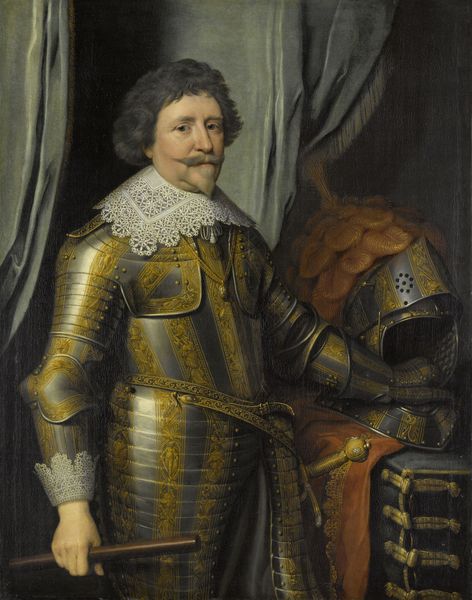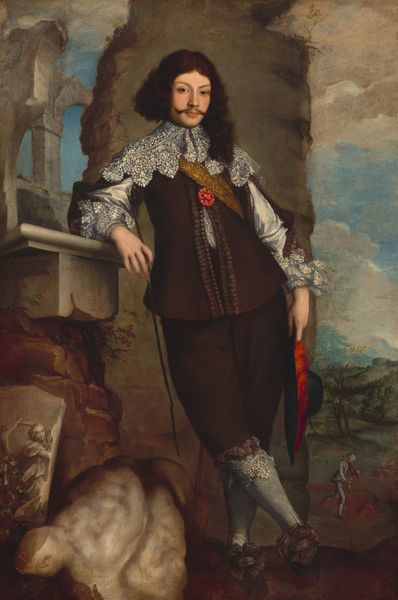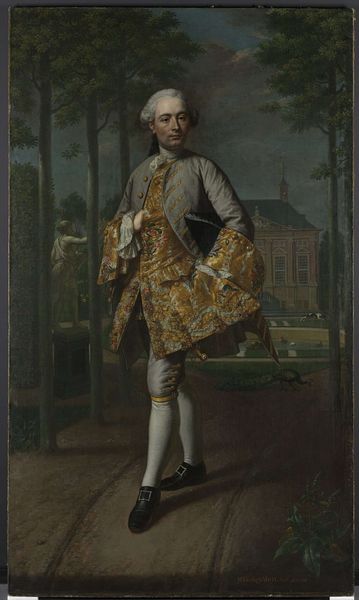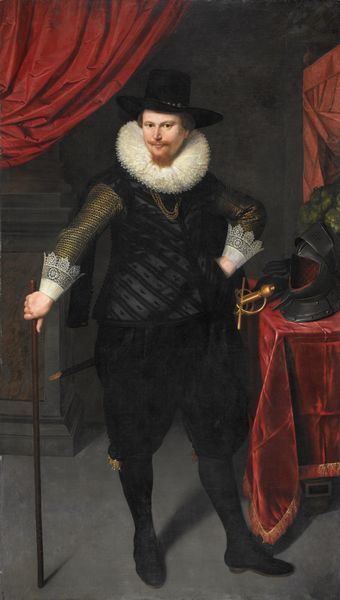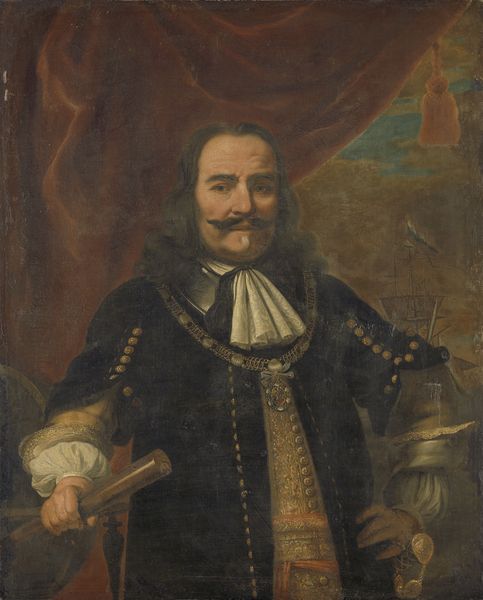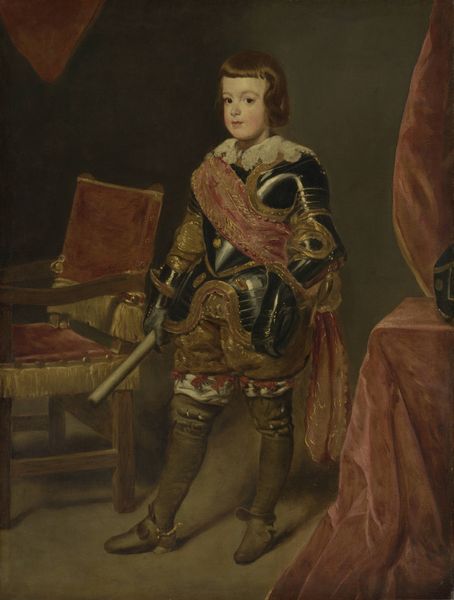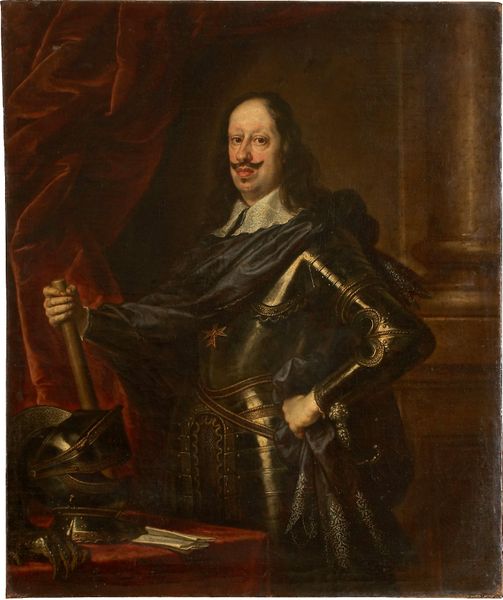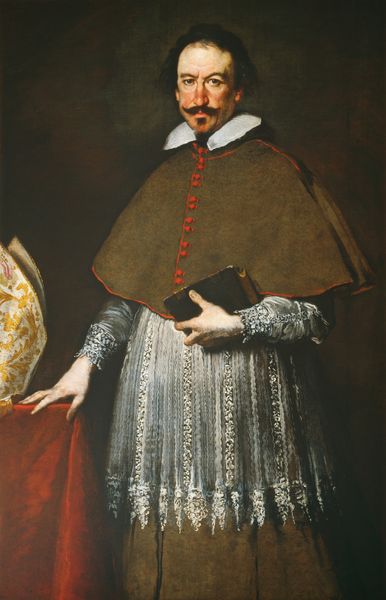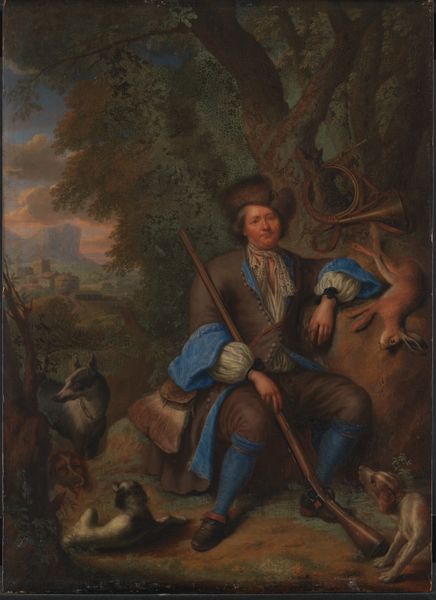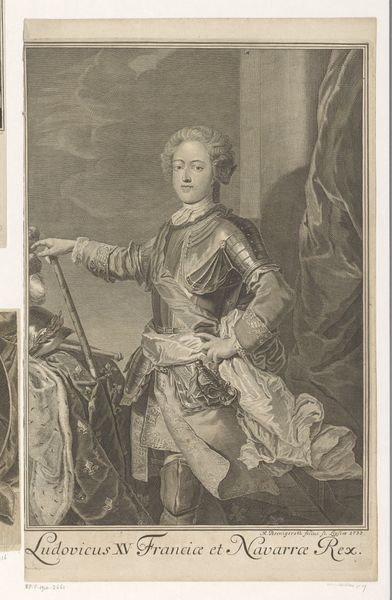
painting, oil-paint
#
portrait
#
baroque
#
painting
#
oil-paint
#
oil painting
#
genre-painting
Dimensions: 242 cm (height) x 146 cm (width) (Netto)
Editor: Here we have Karel van Mander III's "Christian IV," created sometime between 1638 and 1641. It's currently hanging at the SMK in Copenhagen. I'm struck by how much the materiality of his clothing announces his power; what stands out to you in this piece? Curator: The portrait indeed showcases the symbolic power embedded in materials and production. The layers of fabrics, the presumed precious metal threads in his suit, the fur; they all speak volumes about the resources and labor commanded by Christian IV. Consider the sheer effort in acquiring, processing, and crafting these items. How does the understanding of such production influence your reading of the king's authority? Editor: I see what you mean. It’s easy to just see a portrait, but knowing what went into the clothes... it’s a deliberate performance. But is that *all* there is to it? Curator: The “all” is a slippery concept! Think about the socio-economic context. The painting, itself made of specific pigments and oils meticulously applied to canvas, exists within a market of artistic production, reflecting skilled labor and patronage systems. Isn't the painting also, in its own way, a form of commodity? Its existence both relies on and reproduces certain hierarchies of power. Does that idea change your view of its artistic merit? Editor: Definitely, that materialist perspective gives a whole new level of meaning to "genre-painting," it changes the conversation! Now the value of art is in the labor, materiality and context as a way of highlighting socioeconomic dynamics of the era and subject, not the mere act of artistic merit. Thank you! Curator: Precisely! By questioning the seemingly innate value, and probing instead into the circumstances of creation, we see how profoundly art is linked to the world of materials and labor, isn't it wonderful?
Comments
No comments
Be the first to comment and join the conversation on the ultimate creative platform.
